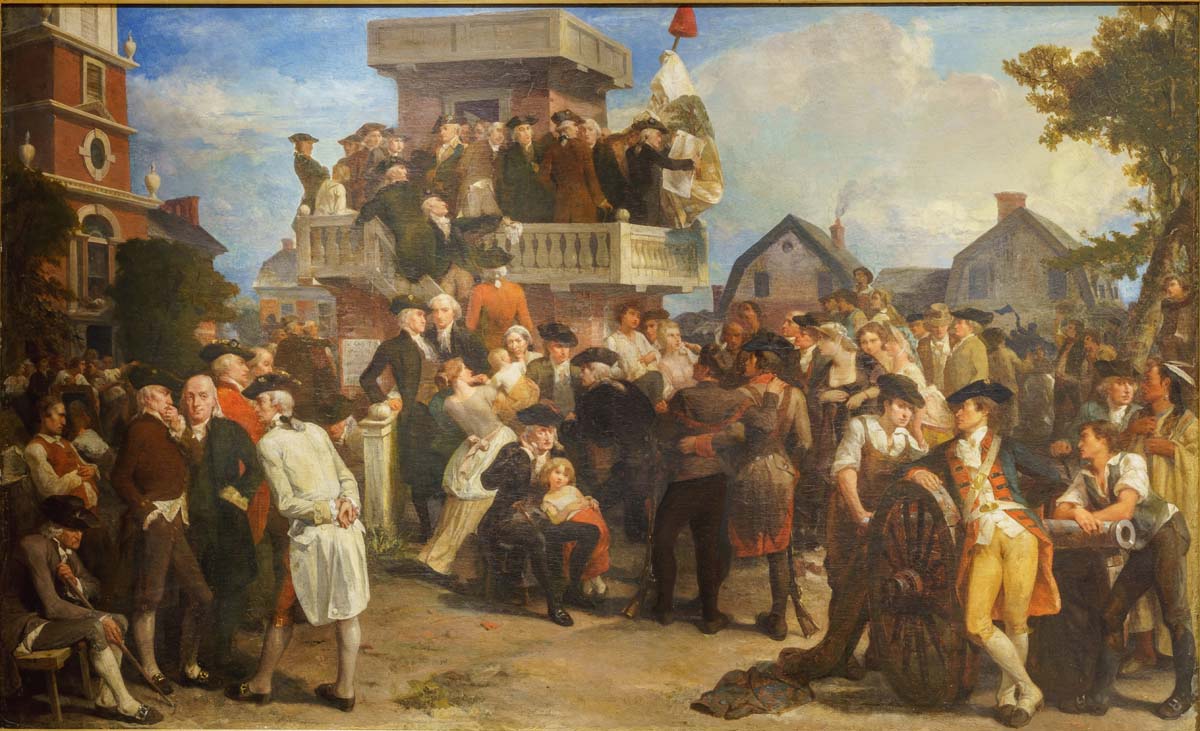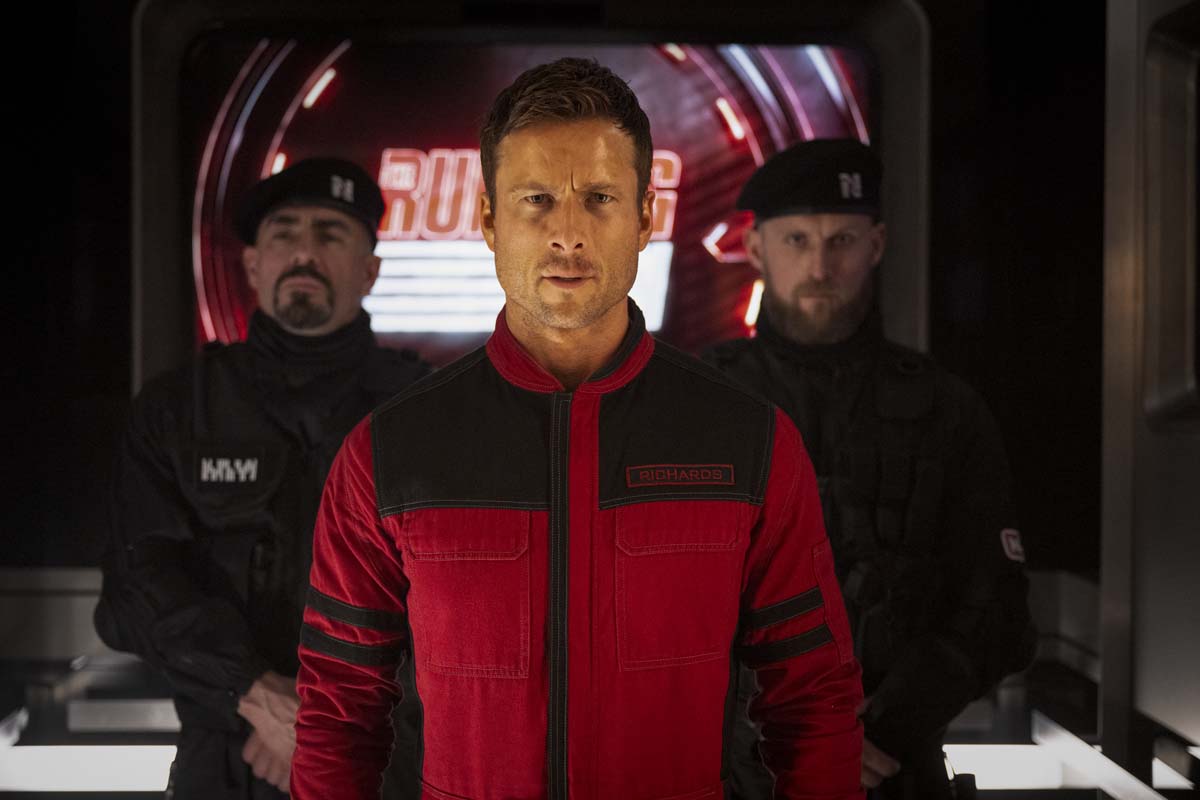Kiss of The Spider Woman
Today’s discussion explores the tonal shifts between Technicolor music fantasy and imprisoned reality, the management of a diverse filmography, and the joys and challenges of editing a musical.
Today on Art of the Cut, we speak with Brian Kates, ACE, about editing Bill Condon’s Kiss of the Spider Woman.
Brian’s work includes feature films like The Savages, Killing Them Softly, and Shortbus. Also documentaries like All the Beauty and the Bloodshed - for which he was nominated for an ACE Eddie - and TV series like Succession, The Marvelous Mrs. Maisel - for which he won an Emmy - and Treme. In addition to his numerous nominations he has won two Emmys and two ACE Eddies.
Brian, so nice to have you on Art of the Cut. I’m excited to talk to you about this beautiful film.
Thank you for having me. It’s exciting for me, too.
I looked through your imdb page and the types of projects that you’ve worked on is wildly diverse. There are documentaries, dramas, comedies, TV, film, now you’ve got a musical. It’s quite the filmography. You’ve literally done it all.
That’s incredibly sweet of you to say. We could try to find a throughline.
What’s the throughline? You tell me. Good projects, I guess.
This year luckily, I think I’d have to say it’s music. The two movies that I edited that are out this year are It’s Never Over, Jeff Buckley, directed by Amy Berg, and Kiss of the Spider Woman.
One is a music doc and one is a musical. I co-edited Jeff Buckley with Stacy Goldate. It’s a fulfillment of a dream of mine to work on projects that are music-forward, so I feel really lucky that they happened together.
Is there a key to editing these musical projects?
It comes from a love for both genres, but particularly musicals and also love of the musicianship of editing and the craft; a specific love of cutting music and trying to figure out if you can get from point A to point B in a way that sounds musically coherent and figuring out a way to compress, or to add bars, or to imagine an instrument line that isn’t there that could make a bridge.
I worked with incredible music editors on Kiss of the Spider Woman…some of the best. I had E. Gedney Webb and Tim Marchiafava. It’s not like I do it alone by any means.
You have to love what musicals are doing, which is telling stories through song and dance. And that idiom has to enchant, the same way it enchants Molina in the film.
I’ve always always wanted to cut a legit musical because I have several previous projects that are quasi-musicals, where all of the music is sourced, or performed, i.e. diegetic music.
The projects I’m talking about are Lackawanna Blues that I did with George C. Wolfe, who’s a Broadway legend, and the films I did with John Cameron Mitchell, like Shortbus and How to Talk to Girls of Parties. And I worked on Treme, which is the David Simon show that took place in New Orleans after Katrina.
I did two episodes that were full of musical performances that were shot live with excellent recording and had to be edited down quite a bit. So those are the skills.
I also did an audio podcast with John Cameron Mitchell (co-edited with Ali Muney) called Anthem: Homunculus. It’s ten hours with…
I can’t even count how many musical numbers. I cut it on an Avid, but strictly audio. It starred Cynthia Erivo, Nakhane, Glenn Close and Patti LuPone.
We recorded the music with all of the instrument stems available and it was really about creating a narrative through song, so that was a way to train myself for cutting sound and cutting music for this movie.
Is there a key to editing these musical projects?
There’s an edit in “Spider Woman” in the long evening scene, when Molina and Valentín are telling the story of the movie and Valentín starts to get addicted to hearing the story of the film, and he tries to go to bed, then he wakes him up and pushes the curtain open and says, “Molina! Tell me more.”
That was always meant to be a comedy cut. And there was a lot more head and a lot more tail on the A-side and the B side, and getting that cut to work exactly right took a long time, and we didn’t get it right until right before we locked. It was fascinating.
The A-side needed a tiny bit more frames of Valentín waiting, just to see if he was going to go to bed. We ended up rocking and rolling the shot so that, it had maybe 12 more frames, but I swear, that comedy cut didn’t work until we made that tiny adjustment; so it’s rhythm. It’s comedic timing.
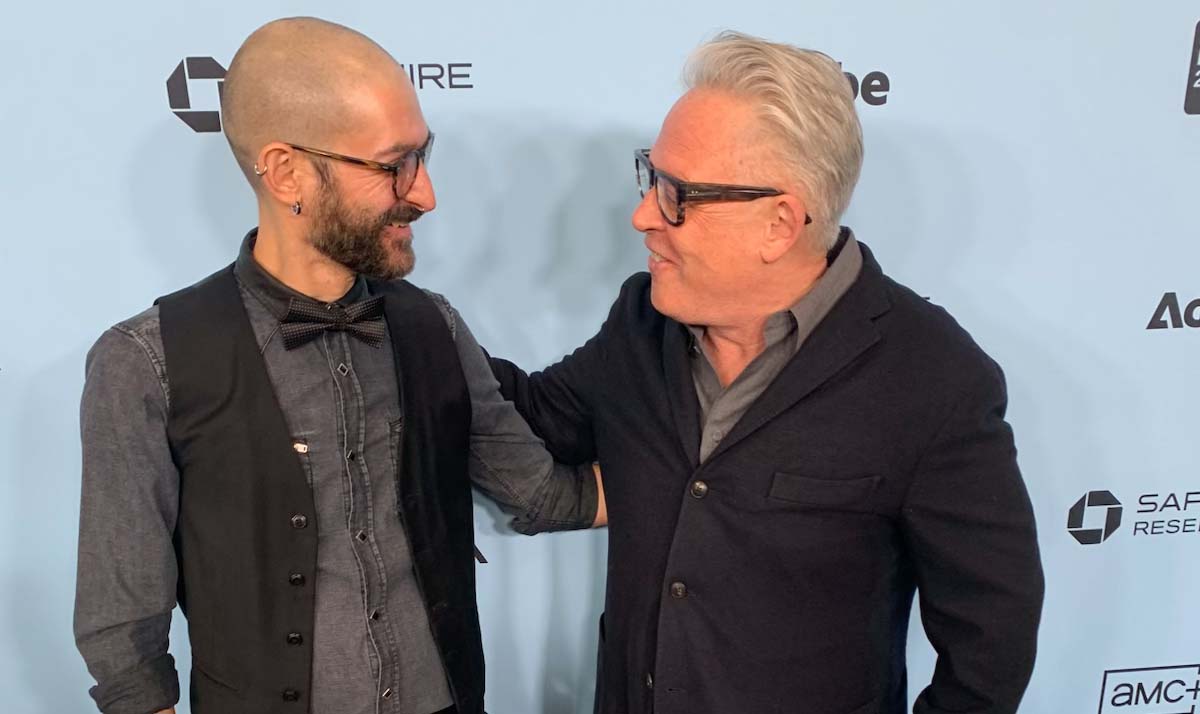
Editor Brian Kates, ACE and director Bill Condon
You’ve worked with Bill Condon before. How did this project land on your desk?
Kind of, magically. We did The Big C 15 years ago and it was a great experience. It’s a show that stars Laura Linney, and in fact, I think she had actually recommended me to Bill. I had worked with her on The Savages and on The Laramie Project. It’s rare that editors and actors have any kind of relationship.
I wouldn’t say that we’re buddies or anything, but we definitely got to know each other. She was the connection to Bill.
We had a wonderful time. It was 6 to 8 weeks in LA. It was a quick job. I didn’t expect that he would call me because I hadn’t really been in close contact for 15 years.
But lo and behold, it happened. The lesson was that it’s important to remember who your allies are in the industry and keep in contact with people as much as you can.
When you have a good experience and it’s productive and it’s creative, those things matter. People remember. I remember The Big C really fondly and I suppose Bill did as well.
So this film has a musical that is being described between prisoners in a prison cell, and then there’s the Technicolor fantasy of that same musical, played out. They’re so different tonally and visually. Did you cut them linearly, or did you do all of the Technicolor musical, then all of the prison, then finally join them?
I can answer that very specifically. We shot the musical first and we shot the entirety of the prison second. We shot the musical in New Jersey on a soundstage for 17 days, and then they flew to Montevideo, Uruguay, to shoot in this immense brutalist prison.
We shot the Buenos Aires coda at the end of the movie there as well. The idea - which I knew from the very beginning when Bill called me up about the job - was we would want to have the entire musical fine-cut before moving to Uruguay.
It’s nice to keep up with camera and to cut as you go, and often you do the best that you can, but in this case, it was a stipulation of the job that we would create the entire musical so it would be finished before the company moved, and the actors and the crew in Uruguay would be able to watch it and understand what the storytelling is about, what the fantasy is, what the memories are.
It was kind of a marathon. It’s always hard to keep up with dailies because people tend to shoot more and more. But Bill designed the musical with precision. He didn’t overshoot. It was such a pleasure. That made it a lot easier to keep up with camera.
I also had the best crew I could imagine, my associate editor, Matthew Buckley, who I work with a lot, and Derek Cooper who was the visual effects editor, Susan Chen (additional vfx editor), and Dasha Mazaeva was the editing room assistant.
Rachel Jablin was the post-super who I’d worked with before on The Marvelous Mrs. Maisel. I felt very safe, protected, and like I had all the resources that I needed.
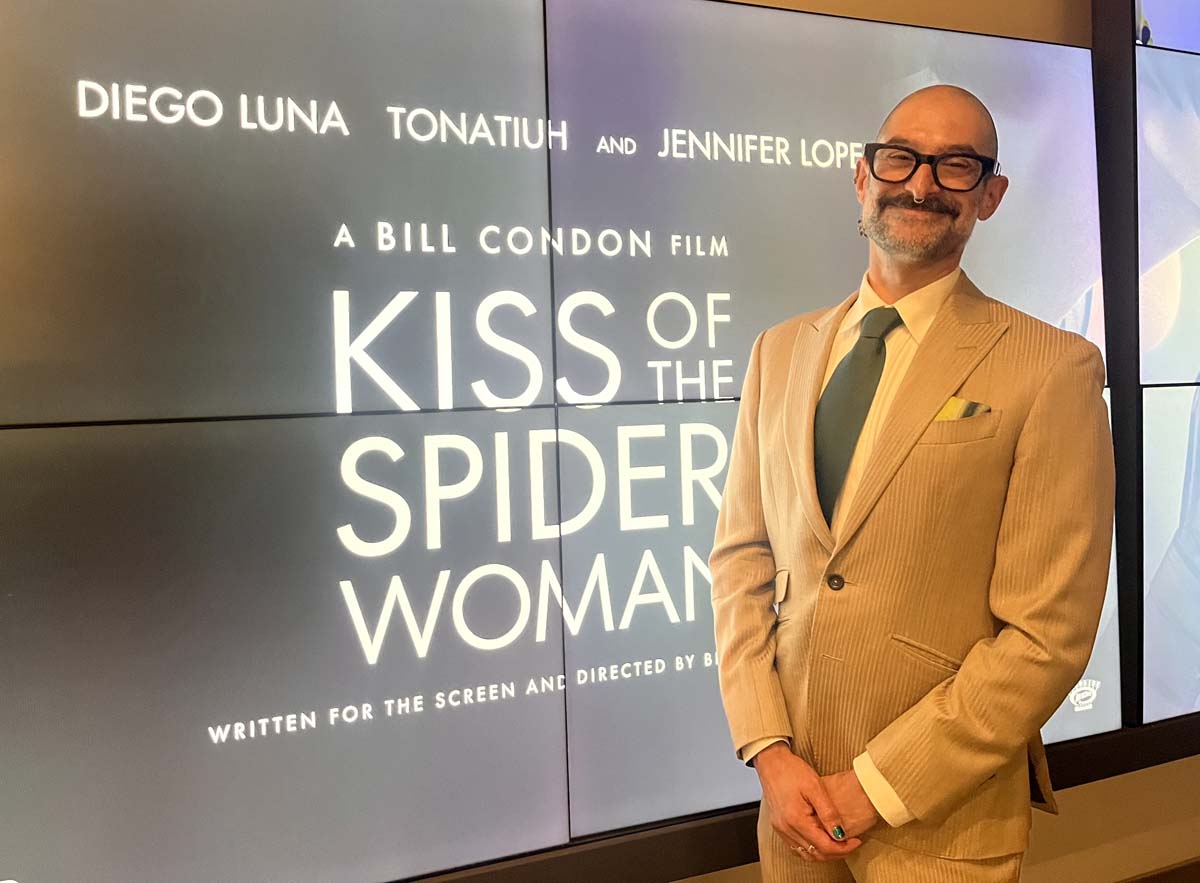
Brian Kates, ACE
The job was to hand in the musical two days after they wrapped in New Jersey. It’s not uncommon to send cuts to the director in the middle of the shoot while you’re assembling, but this is the most often I’ve ever sent to a director.
Every week and sometimes twice a week I would send the entire assembly, either on Moxion Flow Capture, or Bill would come in when he was shooting in New Jersey.
In Uruguay, he would watch it every Friday night. It was fantastic because he could see the movie being built, scene by scene, and he would give me notes and I would implement the notes. So I would be chasing my tail a bit because I’d have new scenes and I’d have revisions on old scenes.
But my crew was so tight, and there was an enthusiasm about the project that kept it buoyant. We were just “in it.” And the footage was delightful. Without all of the pre-production work that went into the choreography and into Tobias Schliessler’s cinematography, I couldn’t have cut that quickly.
Did you learn anything new while cutting this musical? Or was this the same idea of what we normally do as editors and just let the material speak to you?
The movie has two different styles. The film-within-a film is a 1940s/50s-era MGM-style musical, and it has the long takes and wide angles of that style. You see the dancing, the choreography; you see the foreground and background. It’s a style that you don’t see a lot anymore— it honors the full-body work.
Then there are three numbers that are in Molina’s imagination - “Where You Are”, “A Visit”, and “Only In The Movies,” and those numbers are in a different style that has more flexibility.
I watch everything. I make selects. I’d see what graphically works with what and what moments of choreography sparkle, and try to use them, a lot like how you cut dialogue.
I’m looking for gems and consolidating around the things that work the best, and building from there, even if it’s the middle of the scene rather than the beginning of the scene. You work from what speaks to you and what is strong.
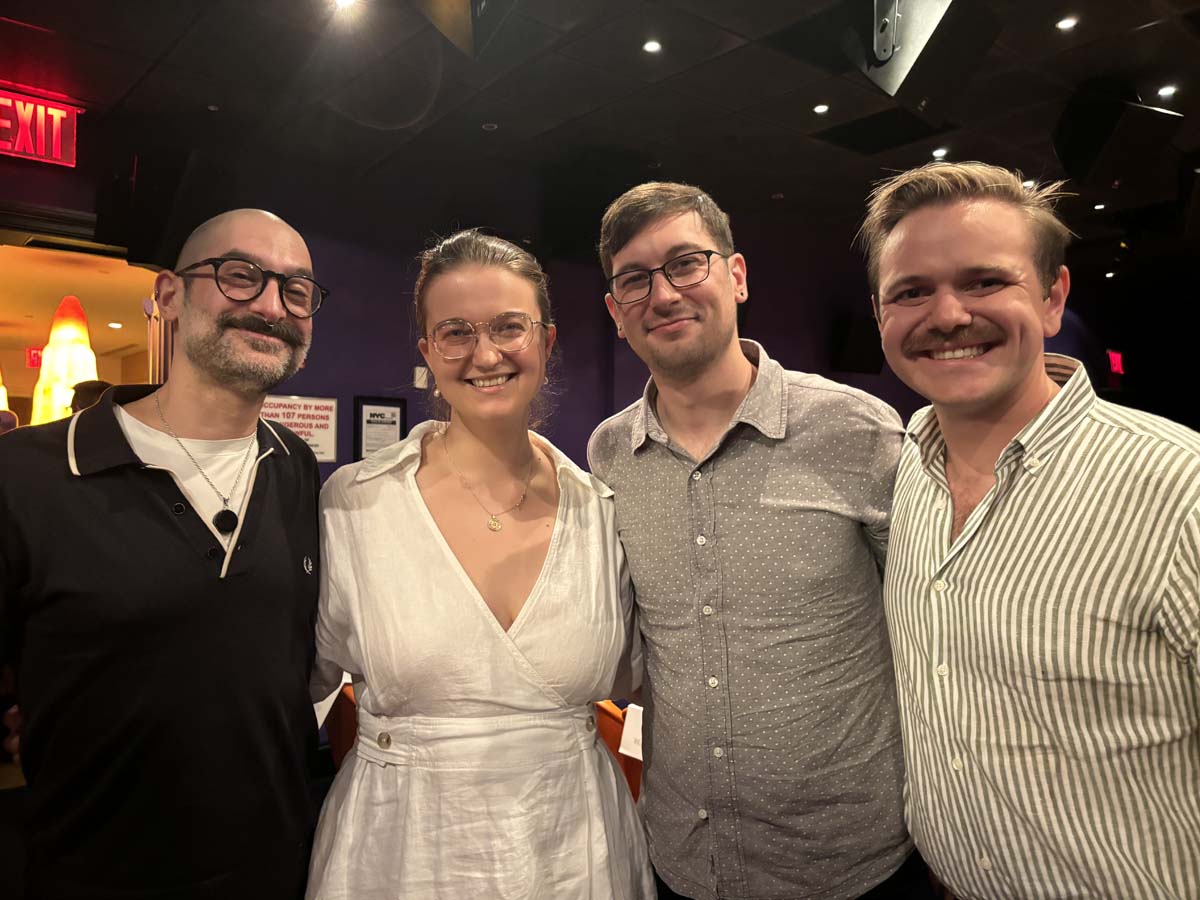
I did learn something really surprising: I came in on a Sunday to work on the number “Only In The Movies”; I was trying to just crack through it. The tango section was shot on two cameras and had a lot of footage.
I noticed that my instinct was to cut on a strong action: if you put the “splice” between the end of an action and the beginning of a new action, the cut accentuates the physical movement.
That’s almost intuitive for me at this point. I don’t know if it’s a rule or if it’s just something that feels good. But then I found myself sliding the cuts back a few frames, to make the choreography feel more alive and continuous, suggesting that the dancers were doing the actions in both takes;
I wasn’t cutting to a new set up so that they could start a new bit of the choreography— the dancing was continuous.
So I found myself just fighting against my own instincts a bit, thereby honoring the choreography and the physicality of the dancing. Something that applies to almost every situation in editing didn’t apply as much for this particular situation. It was really cool.
Did you discuss with the director the difference between those three fantasy numbers and the Technicolor numbers? Were they supposed to look different editorially?
Bill told me the number “Where You Are” didn’t have to feel like the other numbers. The film takes place in the early 80s, so the number could be filtered through Molina’s imagination of Bob Fosse or early music videos; it could be cuttier; the cuts could sparkle more, be more visceral, and more of a mosaic.
I think my first cut probably was too much of that because I was dazzled by what the dancers were doing, and I wanted to play with the flutter of all of these actions through editing.
I think I lost a little bit of Molina and Ingrid Luna (JLo’s character) at the beginning of the scene, and Bill said, “You’ve got to hold off on that stuff till the last bit of the number.
Be with the characters for the beginning of it.” And I had to simplify it. It was a really good note, because it’s always about story. Even when the story seems to be, “how high can this dancer jump?” And can they all do it in unison and land on the same foot? It’s story? It’s always story first.
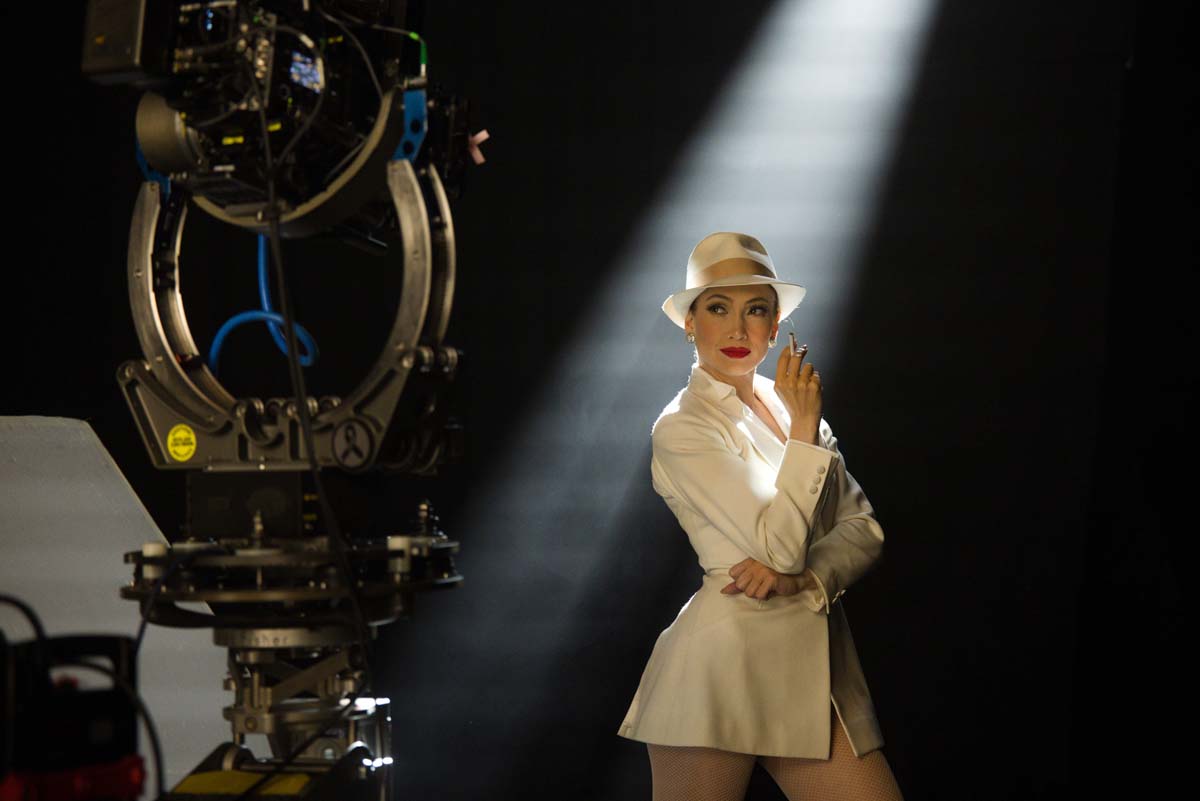
Did you watch a bunch of old Technicolor musicals?
Yes. The main inspirations for us were The Pirate, Yolanda and the Thief, Silk Stockings. There’s a Marilyn Monroe-like number, influenced by Diamonds Are a Girl’s Best Friend. Les Girls is an amazing movie; that’s the one that really made an impression on me.
It’s sort of a Rashomon-structured whodunit about dancers in Paris. Its mixing of genres and its craft and acting are kind of spellbinding. It was wonderful that my homework was to watch great movies.
Did Bill give you that homework, or did you decide to watch those yourself?
We talked about it from the outset - from our first conversation. The crew needed to watch those movies because we all needed to be in sync about what vernacular we were using, in terms of palette, set design, cutting.
This movie is based on a novel. There’s also a previous movie, and there’s the Broadway show. Did you feel like you needed to watch and read any and all of those or did you have to actually protect yourself from them?
It’s a good question. I wanted to see everything. I hadn’t seen the show, even though I was in New York when it was on Broadway.
And in fact, one of my first jobs was as an assistant editor on the movie Caught, directed by Bob Young. I was working for editor Norman Buckley.
Our star, Maria Conchita Alonso was the third “Spider Woman” after Chita Rivera and Vanessa Williams. So they had to drive her from set to Spider Woman every night.
I was syncing dailies on that film, so by rights, I should have gone to the show at some point! I was very aware of it. But, I was very busy and poor - just out of college.
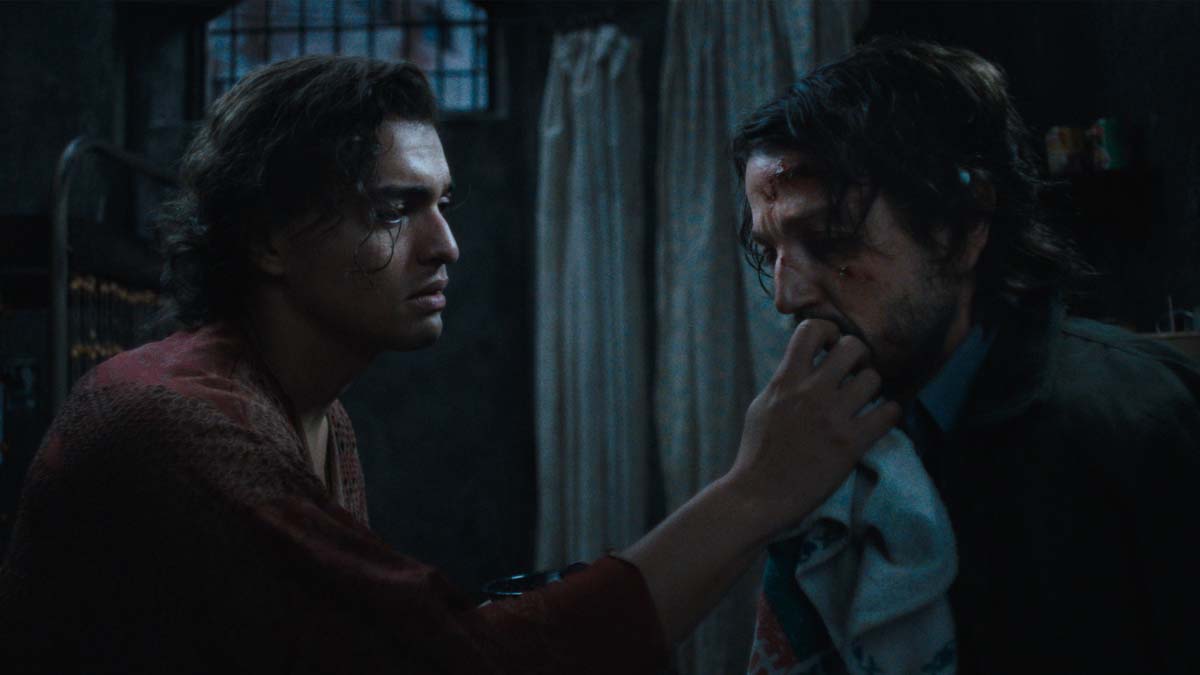
Also, as a queer text, Kiss of the Spider Woman loomed large in my imagination. I knew that it was an important gay love story. And I also knew the 1985 movie and I re-watched it before starting ours.
As research for our movie, I also went to the Lincoln Center Library For The Performing Arts and watched both the Broadway production and the workshop production made before, which was produced at SUNY Purchase in 1990, which contains an entirely different book of the musical.
Bill actually incorporated several of the songs from the workshop production into our movie that hadn’t been seen since then (“Everyday Man” and “Never You”), and had never been recorded.
So the script is a hybrid of Spider Woman productions; and the novel is also very present in Bill’s screenplay. It was written in 1976 by Manuel Puig.
When I read it, it felt unbelievably contemporary and urgent, not just in terms of its politics— the Argentinian military dictatorship— but in terms of its gender politics. It felt strikingly modern.
I loved many of the reaction shots you chose, especially in the prison cell. What’s your approach to when to be on one character or another in a dialogue scene?
It’s about looking at all of the dailies, making selects and organizing them in a way that I can access them quickly and remember stuff.
When I watch a scene for the first time, I put the dialog in one section of the timeline—multiple takes that I like; then put in a space and then put in just reactions organized by a character, or by type of reaction, without any sound underneath them to distract me.
So I always have a bank of reactions that I like. I like to remember where they came from, but I also like to forget where they came from in case they’re usable elsewhere.
How to know whether to be on the speaker or not, is about what matters to the story - whether the weight of what that character is reacting to is the relevant bit of information (more than seeing somebody talking.) It’s completely subjective, and depends on the context.
Molina has an amazingly strong reaction to Valentín saying, “I cringe every time you make fun of yourself.” We had an alternate take at one point that almost made it seem like Molina was maybe kind of “gamed” Valentín, or took a bit of pleasure in Valentín getting close to him so quickly.
It was an incredibly complex thing that Tonatiuh was doing. We loved it, but it wasn’t as readable as the other take, so we went back to the other one.
The thing about the relationship between Valentín and Molina, is that they become more and more intimate throughout the movie, but you can’t skip any steps. We all had to build it very, very, very gradually. It’s about calibration.
You’ve got these amped up gorgeous musical numbers, then you’ve got a LOT of dialogue in these prison scenes. Did you find that those needed to be broken up differently than maybe they were in the script?
In small ways that emphasized moments that resonated. For example, there’s a moment when Molina says “It’s the most terrible thing when people can’t admit they’re in love.”
That line could play over the part of the movie that he’s talking about - which is the goodbye scene between Armando and Aurora in the hotel, which leads to the song “Never You”.
But it felt better to be on Molina’s face and feel the resonance of the fact that he’s really talking about himself and Valentín.
What’s happening on screen is a projection - no pun intended - of the love story that’s happening in the present.
So, it felt right to emphasize that. It felt great, even though I don’t think it was necessarily scripted that way.
We had latitude because we had long, uninterrupted takes in the prison. And we also recorded Molina’s voiceover from the very start, when we were shooting the musical numbers in New Jersey, when Tonatiuh was playing the character of Kendall Nesbit, who’s his character in the musical.
Greg Yolen, our producer, who is fantastic and on top of everything, was getting me Molina’s voiceover to use as interstitial bits of audio that would take us in and out of the musical.
So even when I was cutting the musical, I had the narration, so to speak, from the set. I had the blocks that would hold up the structure of the musical. It was very ingeniously done.
Sometimes you’d prelap in and out of the music numbers and sometimes you’d cut hard. What drove those creative decisions?
Sometimes it’s for comedy, like an early cut out of the musical number and back to the prison for the Valentín’s line “So she’s frigid” — which is hilarious. But the general conceit of the movie is that eventually, the transitions soften and bleed.
At first Molina is talking about a movie that belongs only to his memory and, by the end, Molina and Valentín are having a shared hallucination. Sometimes Valentín is drugged and is actually hallucinating, and occasionally Molina might be making things up. We don’t know.
He could be twisting the story a little bit to be more relevant to what’s going on politically and also romantically between him and Valentin. So, the “bleed” is part of the structure, and I was encouraged by Bill to bleed the transitions more and more as the film went on.
A lot of that’s done with music. It was important to get all of the available music from the show. There are two Broadway soundtracks. I used them both.
Our music producer, Matt Sullivan, who is a huge part of the process - my editing process and the film in general - would feed me materials.
I would use Izotope to remove the vocals so that I had essentially an instrumental score that I could use to start to build transitions. All of that score was John Kander’s material, sometimes repurposed or reconceived.
Our composer, Sam Davis, who’s brilliant, and is very close to Kander, would also give me stuff early on, but also would take what I built, which was rudimentary, and Gedney Webb, the music editor, would re-orchestrate it and fill it so the vamps I would create with a percussion stems would turn into something far more elaborate and intentional.
I love that process. And doing that process from the very beginning in the assembly stage was a real pleasure, because occasionally that stuff is left for the very end of the process, or at least past Director’s Cut, but we were doing it right away. It was really important to fill the sonic world with music.
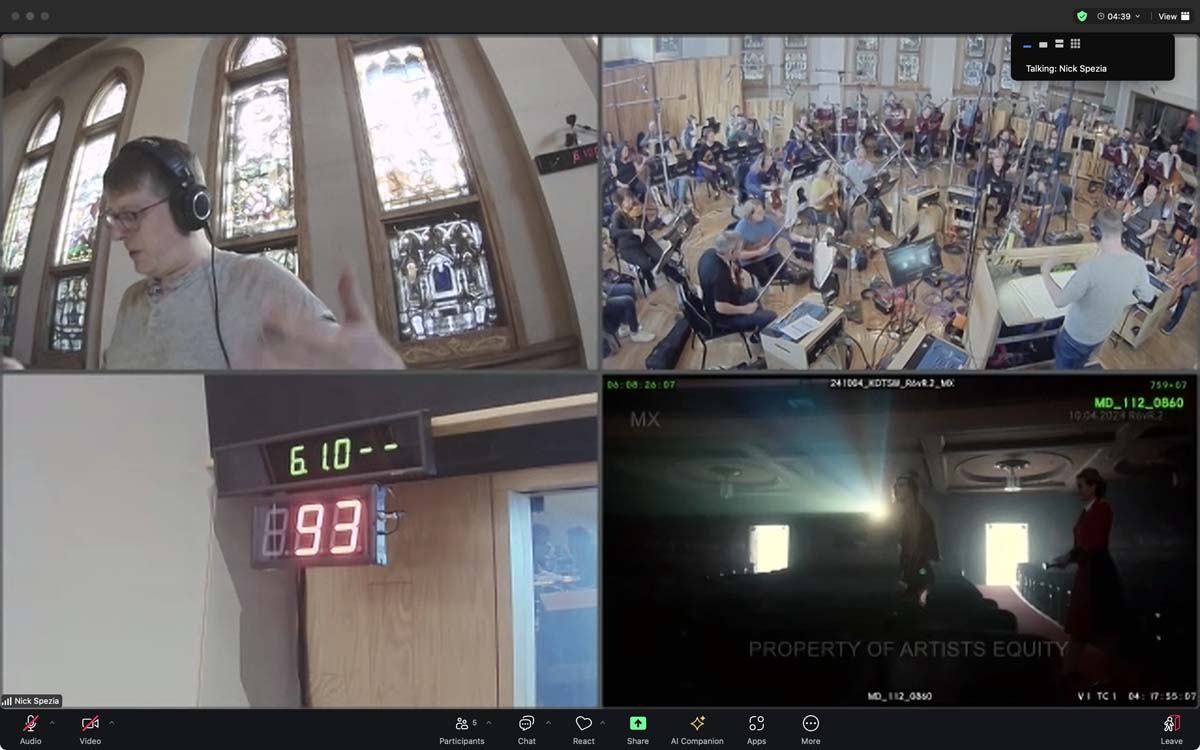
Did you have to cut down any of the songs - I’m assuming you did - and how hard was that?
We did, and it was fun. Sometimes I would turn off the video and just edit the music, and Bill, who really understands how music works, would direct me, but I also did a lot on my own. I would cut it just as music and then figure out what shots would create the bridge to connect.
We cut out an entire section of the song “Never You,” which is the song in the hotel when Armando and Aurora kiss.
Getting them into that kiss probably wouldn’t have worked as well if I didn’t change the picture takes on either the A-side or the B-side. It became a puzzle- How can I get from point A to point B the most elegant way, when I know that the sound has to do this thing that I’m forcing it to do?
I loved the Miracles duet. In it, the movie character played by Jennifer Lopez sings a duet with the girlfriend of Diego Luna’s character. I was struck by how hard it would be to choose who to be on during the duet. There are so many moving pieces. I think I’d have given up and just put all the cameras in a split screen and let the audience choose!
I think we did do a split screen version of it at one point!
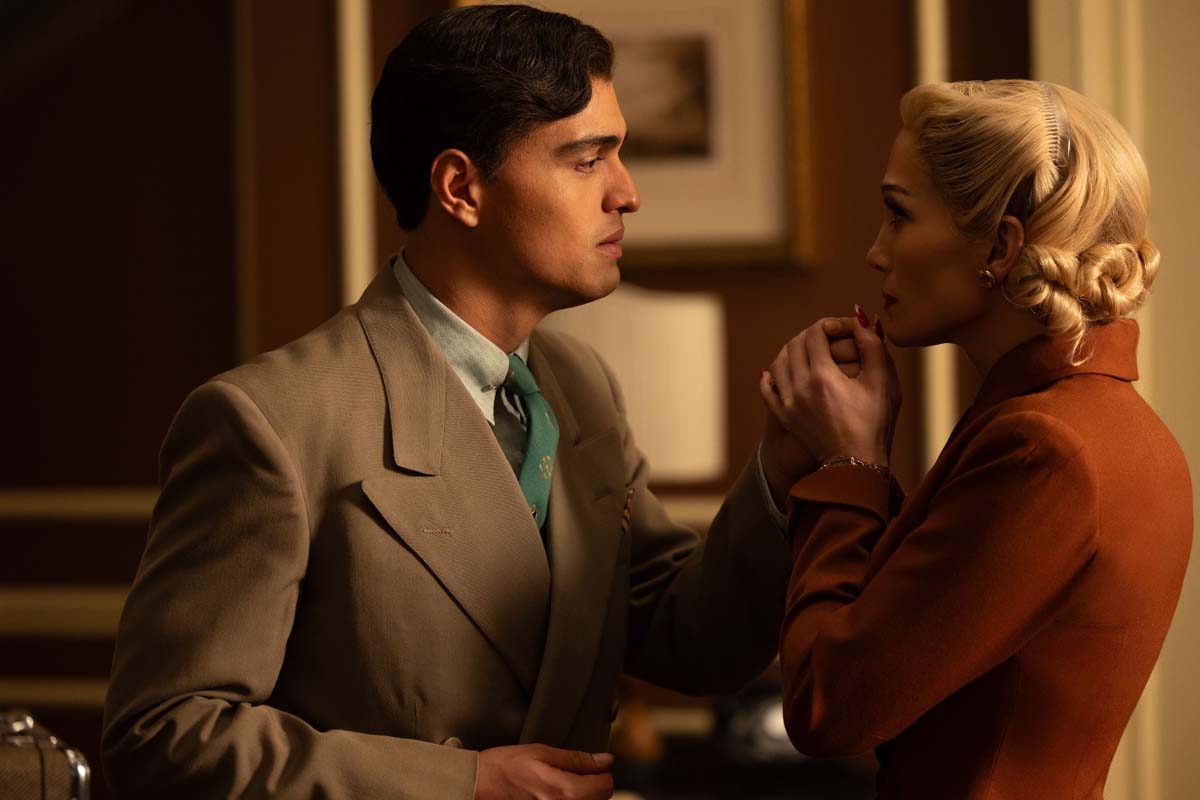
Really?
A short-lived split screen version! But it was about establishing the movie version first. It’s Jennifer/Aurora’s song, then we introduce Marta, the girlfriend, and then the music does the rest. It is written as a duet, so it’s clear when they’re going to begin to sing together.
There’s not a lot of choreography, but Marta does take Valentín’s hand and put it up to his mouth for a kiss. And there is Molina watching from the back of the cell.
Those are important story beats that you need to see. You also need to remember that Aurora is the muse that is allowing all of this to happen, so it starts with her and moves to Marta, then it integrates both, and then it has a button of Molina at the end, the one who cooked up this whole fantasy.
We also cut a lot of the song, but I believe it will all be on the soundtrack.
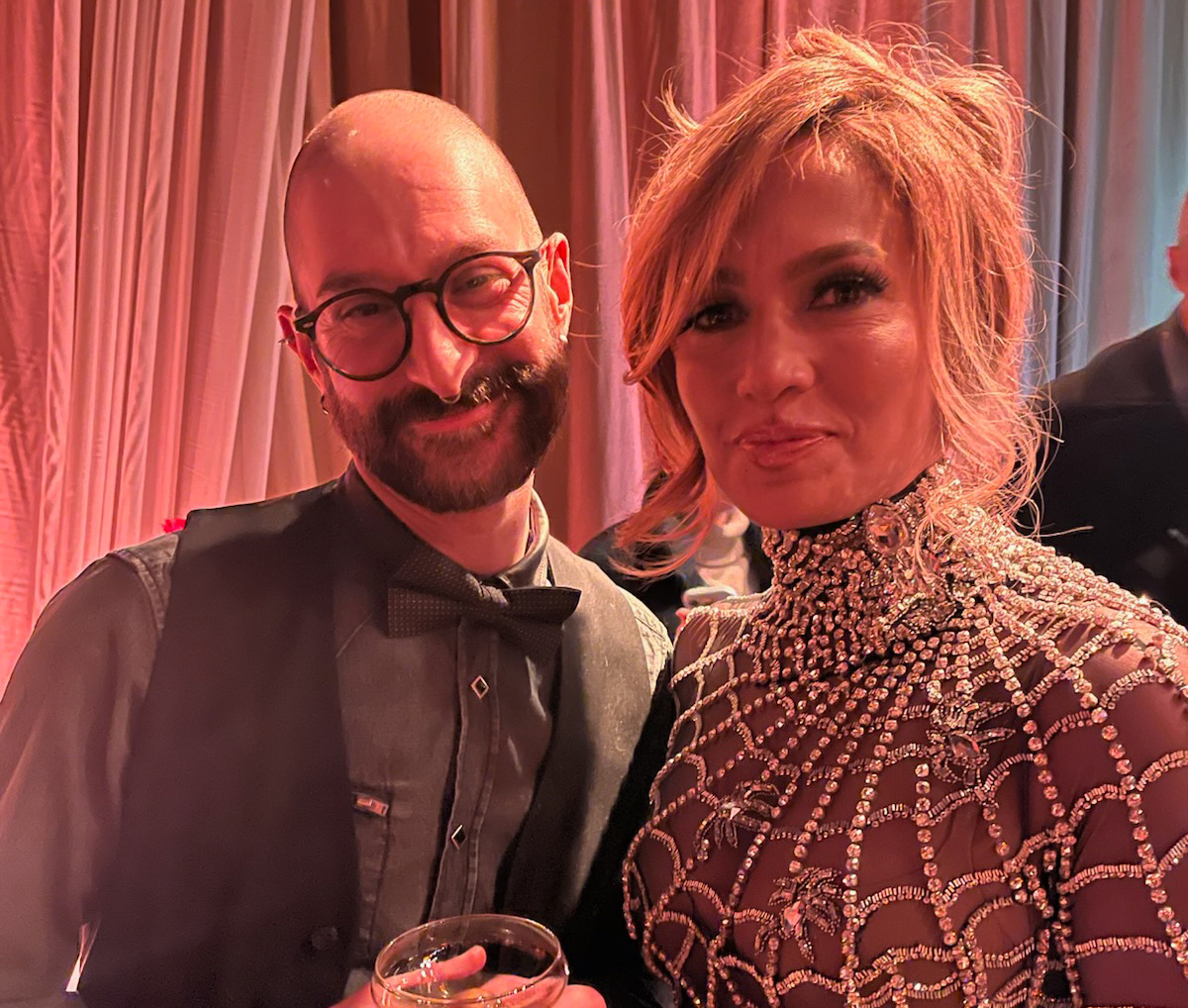
Editor Brian Kates and Jennifer Lopez
There’s an intercut drugged scene. People drugged in the prison and in the musical.
That’s when Valentín has been food poisoned by the guards, had been throwing up and had… bathroom problems. The story that Molina is telling is about Aurora’s drink being spiked, and she enters a dream nightmare/fantasy of sex and betrayal.
The red bar scene owes its inspiration to Gene Kelly’s/Vincente Minnelli’s The Pirate. The challenge was intercutting the nightmare of Aurora’s erotic frenzy with Valentín’s illness.
They shot these wonderful swish pans of the masked dancers, designed so that there would be graphic matches that you could make with the cell: Valentín running to the wall, running to the toilet. Not only would some of the actions match, but the shot design as well.
You’d be under Aurora when she’s being pulled by the masked dancers and you’d be in a low-angle in the bathroom watching Valentin retching.
It was designed that there would be opportunities to put them together. We worked a long time on finding the most graphically interesting way to match stuff in the parallel stories.
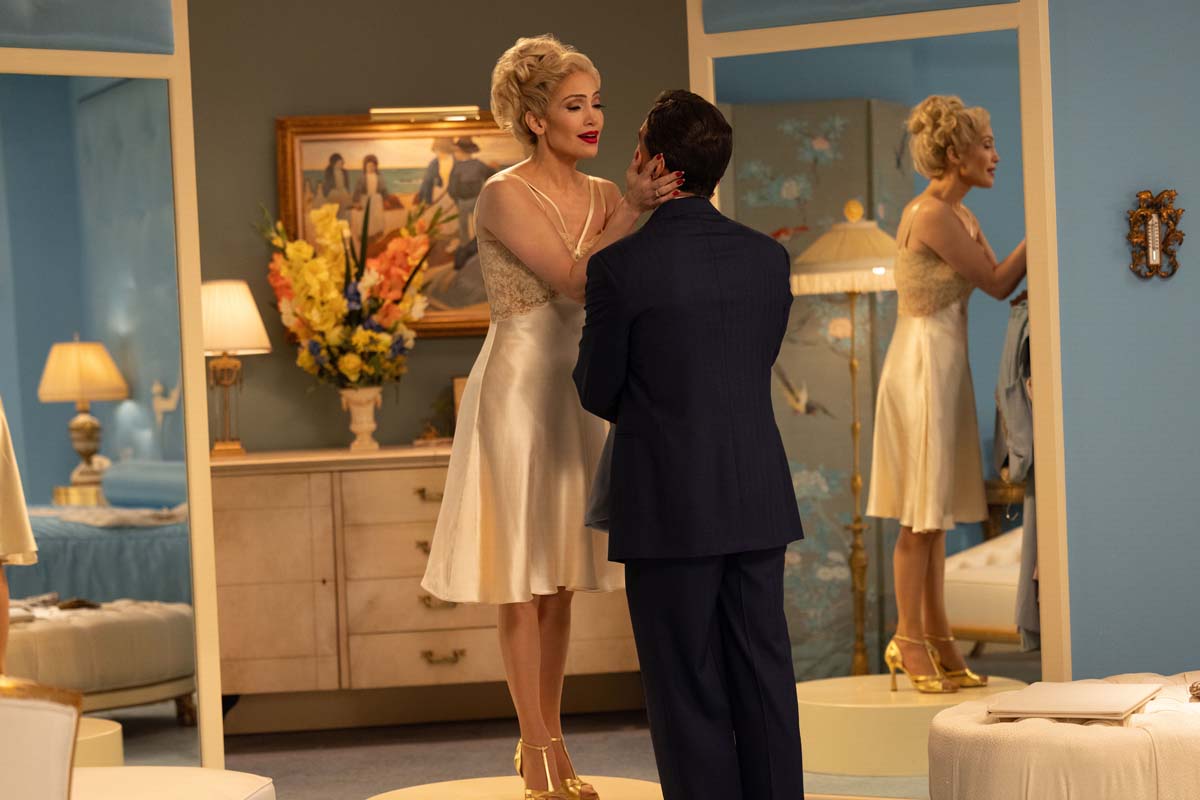
There are two different musical styles, but what about the prison? Was there a style for the editing of those scenes that you discussed with the editor prior to cutting?
Bill told me, for the prison, we should be influenced by late 70s/early 80s Sidney Lumet or Alan Pakula-style thrillers. We were trying to create a contrast, not just in terms of palette and shooting style, but sonically as well.
That’s why there’s no score. But the thing about the prison is that it changes. It starts off as a cold, brutal place, with cold light and shadows. But it also becomes a very romantic place.
When Molina and Valentín have their candlelight dinner, that cell transforms into a very desirable and warm location. There was flexibility in that setting, but it was all story-based.
Did you do anything in your picture cut during the prison scenes sonically to immerse the audience in that space?
I want to credit Ruy García and Luciano Vignola, who did the sound design. It was really important that in this one, confined space, that there would a sonic world outside of that space. Ruy found an Argentinian loop group to do the voices of people in the prison.
In the rain scene, the quality of the rain matters. It starts off as a very hard rain and then softens into a very delicate and sweet rain.
The prison whistle is a punctuation that is scripted to be in certain places. We also added it to be in certain places, to create structure and rhythm.
We created conversations for the cell across from Valentin’s cell that were done in loop group, and we cut them very, very precisely. It’s subjective. It’s a naturalistic place but it becomes a fantasy place as well, so it had to have the flexibility to change.
You’re not going to hear the brutal elements of the sound design in scenes where Valentín and Molina are feeling safe and connected and intimate with each other, because when you’re in love, those sounds- they disappear.
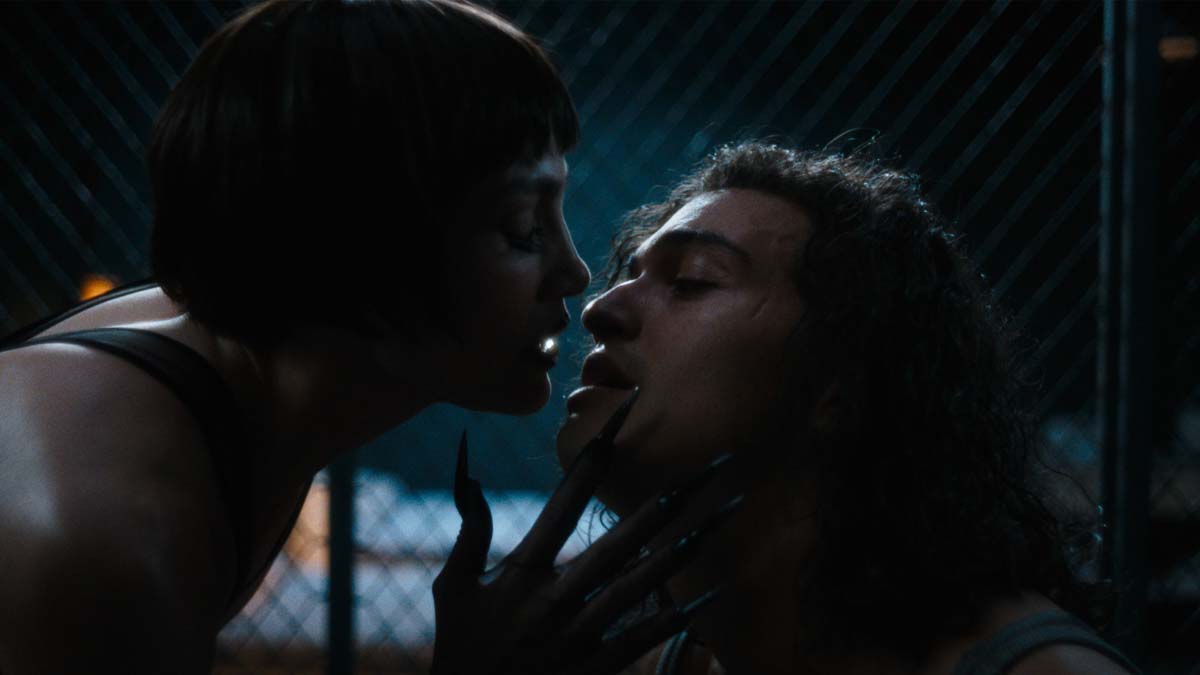
Were there any instances of needing to kill your darlings in this film?
The biggest trims were at the beginning and the end. We had a sequence at the beginning where Molina was moved from the queer prison wing into Valentin’s part of the prison.
It just wasn’t necessary. Likewise, at the end of the movie, once Molina is released, there was a lot more stuff in Argentina about his home life, about his uncle, about his friends.
There is an incredible drag number, at a gay bar that we created for Buenos Aires. But the urgent thing was to deal with the main plotline, which is: how is Molina going to become an agent for the revolutionary cause? What will he sacrifice for love?
So we were very brutal in getting it to the narrative finish line. There are still wonderful things in that part of the movie. We needed a movie for Molina to watch in early-80s Argentina.
I love that the movie that they’re watching is Paul Schrader’s Cat People, because the 1942 version is the first movie that Molina narrates to Valentin in the novel! The novel has - I believe - six movies that are narrated. Bill combined them into one grand movie called “Kiss of the Spider Woman.”
That’s the incredible invention of Bill’s script. But in the book, there are six, and the first one is the original Cat People. So it’s an homage to film history, to the novel, and to Manuel Puig, the novelist.
Once Molina got out of prison I felt like there was a bit of a ticking clock to get to the end of the movie.
At a certain point in the process, we cut out all the references to the musical almost “ending”. There was a line where Valentin said, “We’re reaching the end of the movie.”
But it created a feeling that OUR movie was about to end, and it wasn’t about to end. We also cut out our beautiful “End Title” card at the end of the movie-within-the-movie. We wanted the audience to feel like there was the expectation of more.
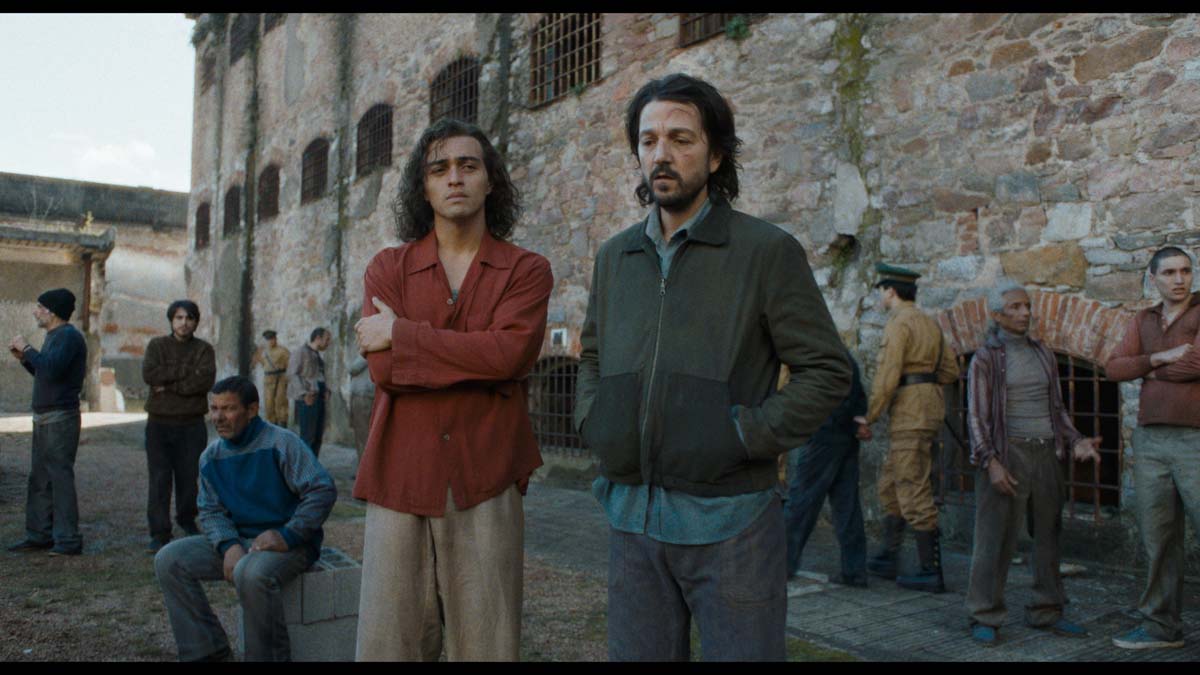
We also debated whether or not the warden should reveal that Molina is being released because he’s going to become an asset, that they’re releasing him only so they can track him to the other revolutionaries.
There was a version of the film where we cut that out, thinking, “Wouldn’t it be interesting if it were a surprise when the police show up to try to arrest him?”
But keeping the warden’s line in created that “ticking clock”, as you said. So it was actually very important to keep in.
Brian, thanks so much for discussing this film with us!
It’s been a pleasure. I love talking about this movie, and I love your podcast, so it’s an honor to be here.








